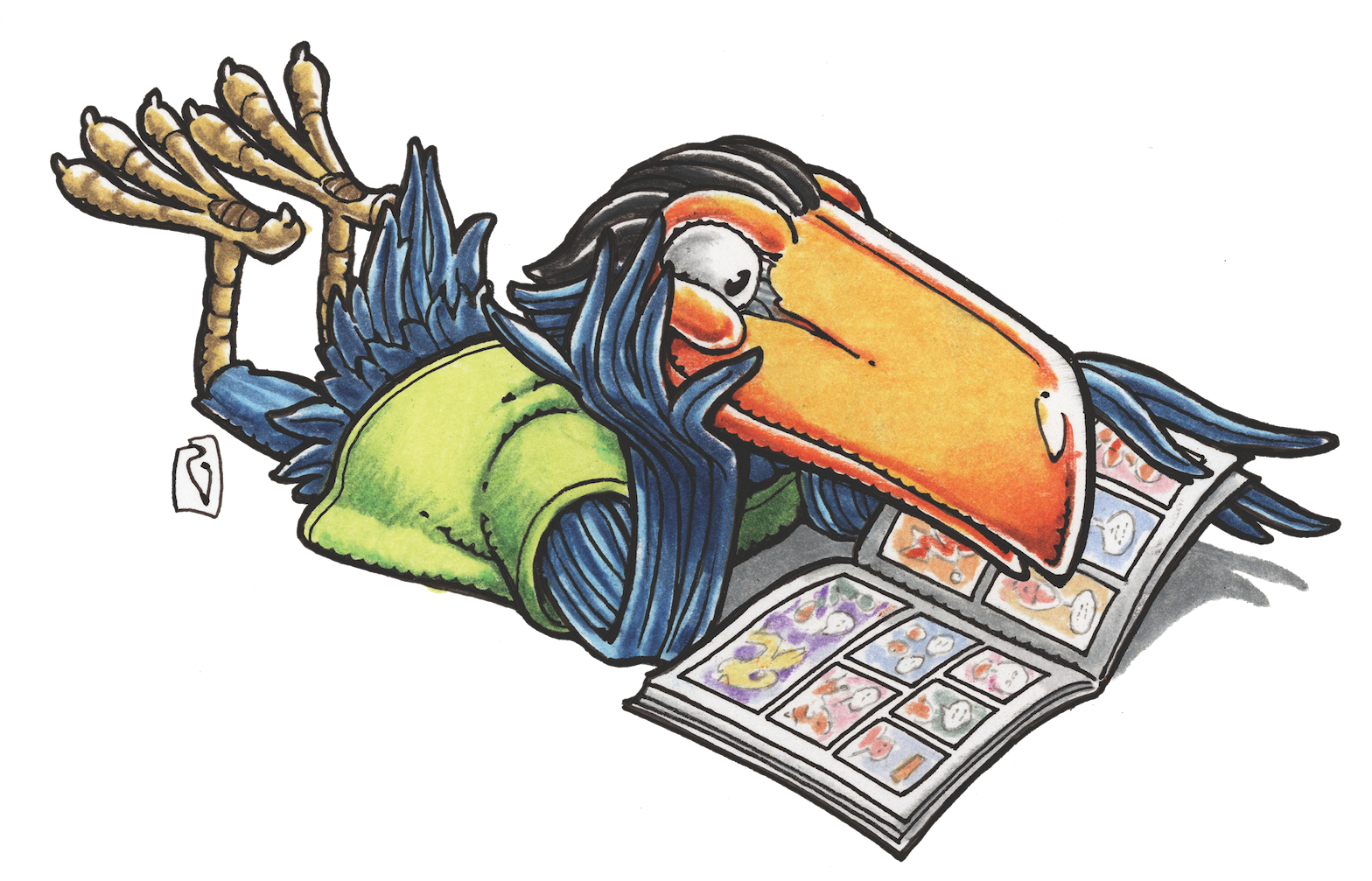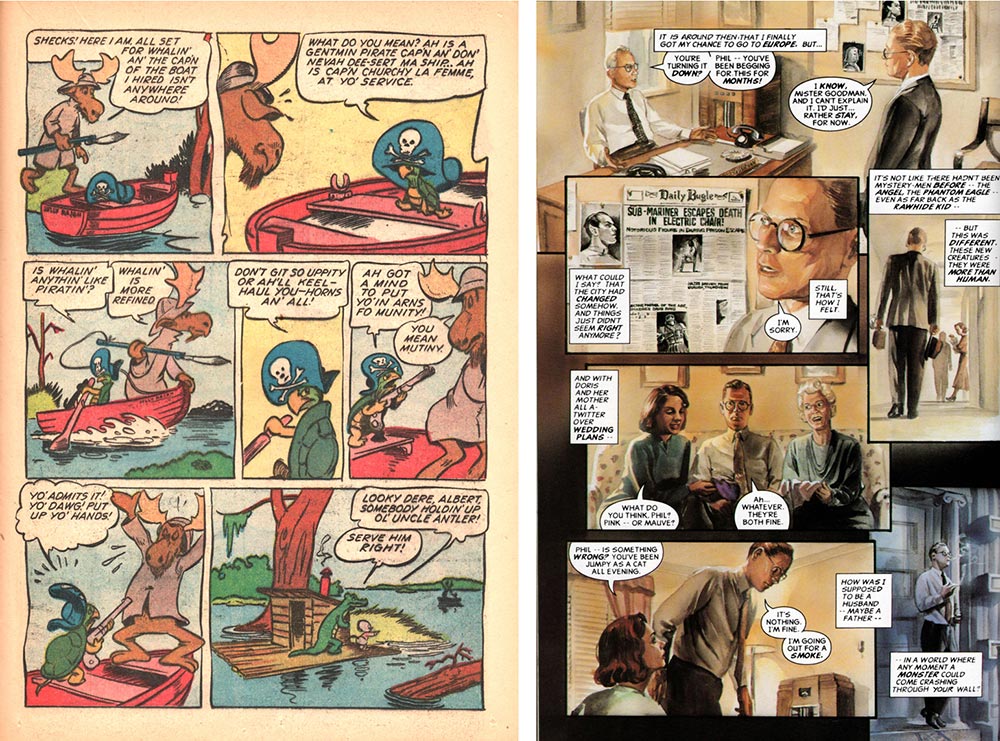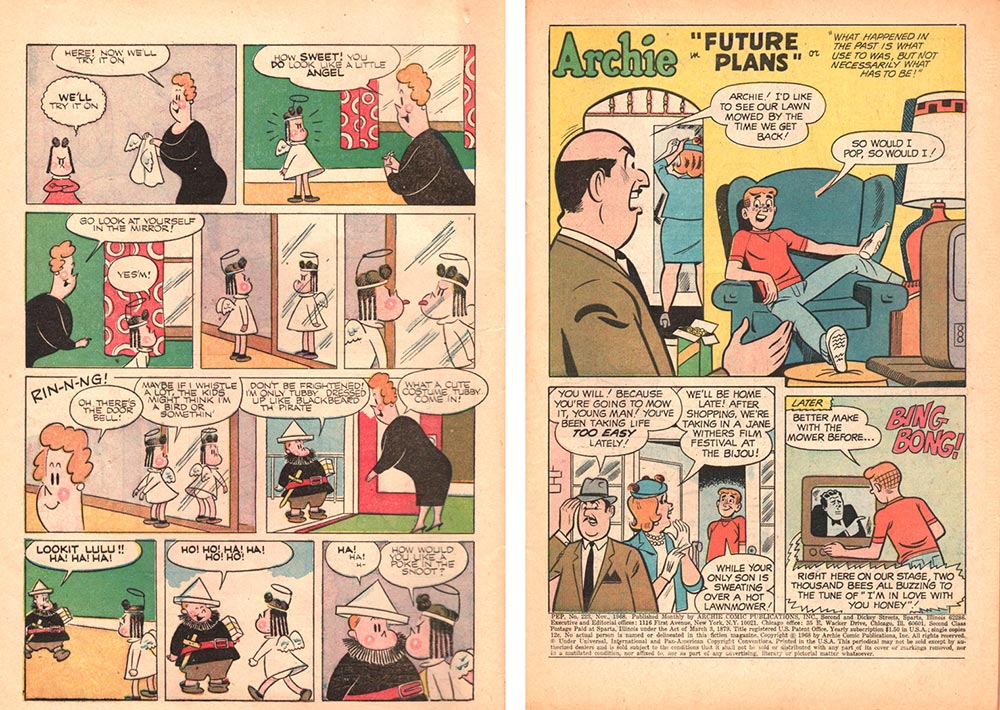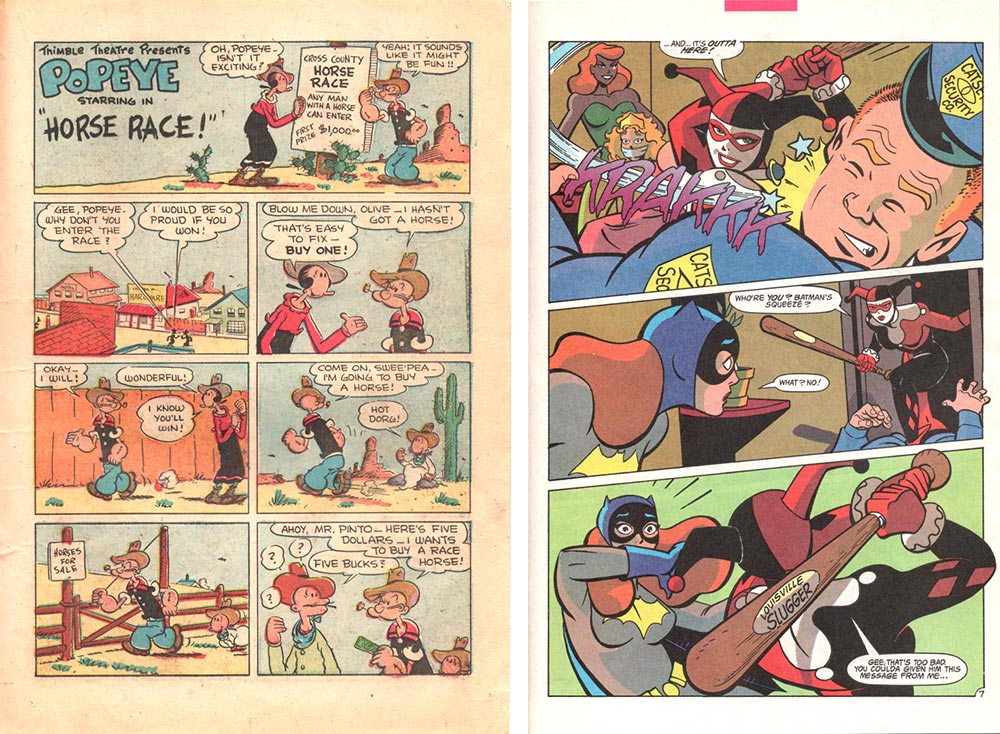MAGGIE’S WORLD BY MAGGIE THOMPSON
Maggie’s World 076: Providing Support

The topic doesn’t include Robin; let’s consider Alfred. Robin is a sidekick. At some point, sidekicks can be a focus—but this time, it’s the turn of Alfred and similar individuals. He’s one of the background characters who provide familiar variety in a series cast.
The topic doesn’t include members of Our Gang or X-Men; such amalgamations are closer to a bunch of equal leads, working together to solve a problem (whether it’s running a paper drive or thwarting an evil mastermind).
Instead, the topic is the plethora of identifiable comics characters who exist primarily as supporting characters. They inhabit and bring richness to the background of tales primarily focused on a few stars.

Who Cares About Supporting Characters?
The 1994 Marvels collaboration of writer Kurt Busiek and artist Alex Ross was a sensation. Its focus was on the impact of Golden and Silver Age super-folk on non-super-people as seen through the viewpoint of photographer Phil Sheldon. It addressed the fact that bystanders can be affected by the events of a story in which the reader ignores them to follow the primary characters. Heck, the likes of Sheldon are often some of the first to be dropped in an adaptation of comics to novels or movies.
On the other hand, the established cast that forms the support for primary characters provides a familiar environment in which characters who get more space can function. If we know that Ma and Pa Kent rescued that foundling, Mr. Weatherbee is a principal, Aunt May is the fragile guardian, Mr. Morris presides over Station WHIZ … Well, then, we can just get on with the story.

Uses
Mind you, supporting characters can provide a basis for new stories.
J. Jonah Jameson’s son was introduced in Amazing Spider-Man #1—but his career took a detour, when he became Man-Wolf. [Digression: Don and I once brainstormed a concept in which, estranged from the editor, JJJ’s never-seen wife becomes some sort of super-villain. But then someone (Gerry Conway, maybe?) scripted a throw-away line in which it was stated that the wife had died years earlier. So our ability to create—and then expand on—a never-shown supporting character had to be abandoned. Doggone it! That option for a potential supporting cast member was gone. But I do digress.]
Sometimes, supporting characters are created to solve plotting problems. I was once assigned a story arc for the Innovation Dark Shadows series that was set in the middle of the 1991 Ben Cross season. The problem: Readers had seen the entire season, so nothing could change what happened to the existing characters. The solution: I just considered who Barnabas Collins’ neighbors might be. (Spoiler: I suggested immortal sisters Stheno and Euryale; you can look them up.)
Sometimes, supporting characters are there just for bonus gags. Who else remembers the cast member of Archie’s Super Duck stories who was introduced in 1950’s Super Duck Presents Fauntleroy Comics #1? He was a large bear with crossed eyes, and his name was Gladly. How many young readers caught that? The character joke goes unnoticed by Wiki so far. (If you question what the gag might be, Google the hymn “Keep Thou My Way” plus “bear.”)

Evolution
In the case of long-running series, the focus can morph. Albert the Alligator and Pogo Possum were the primary Okefenokee Swamp animals in the in Dell’s Animal Comics #1 (September 1942), and Howland Owl and Churchy La Femme weren’t introduced until two and a half years later. Out of curiosity, I looked at the page counts for characters in the sixth volume that collects the newspaper Pogo strip. In 1959 and 1960, Albert appears on 143 pages, and Pogo appears on 174 pages. But it’s Churchy who wins the page count. He’s on 182 pages a quarter of a century after his first appearance.
In fact, sometimes—many times—the supporting cast members become primary characters themselves.
Elzie Segar’s Thimble Theatre comic strip began December 19, 1919, and starred Olive and Castor Oyl and Ham Gravy. It wasn’t until January 17, 1929, that a sailor joined the cast. Popeye was destined eventually to take over the strip and animated cartoons and preside over comic-book adventures.
Created by Carl Barks, Uncle Scrooge McDuck was the appropriately named instigator of a Christmas story in a 1947 Donald Duck comic book. Following three Four Color issues devoted to his adventures, he earned his own series starting six years later.
Did you remember that Ernie Bushmiller’s Nancy was originally the niece of the flapper Fritzi Ritz, introduced in Fritzi’s strip in 1933?
And so on.
Rewards
In other words, supporting other characters can pay off.
When Harley Quinn first appeared in The New Batman Adventures TV series, she might have seemed to some as little more than a colorful addition to The Joker’s Gang: a costumed character to provide variety in a gang of ordinary henchmen. Now, her first presence in the comic-book spinoff makes the issue a key copy for collectors.
Of Course …
Though Alfred provided the introduction, he hasn’t been mentioned since. Come to think of it, any list of supporting characters in comics is doomed to do little more than scratch the surface. Some character types can be counted: How many supers are invisible? How many fashion-focused female stars have starred? But miscellaneous characters that are minor but identifiable? The list is endless, and many supporting individuals occasionally break out: Scamp. Mr. Dithers. Cadbury. Bartleby. Fat Freddy’s Cat. Lockjaw. Dr. Zoidberg. And so on …
And more are to come.
Looking for possibilities in background characters can bring rewards for creators, readers, cosplayers, and collectors. And, heck, in real life, come to think of it. Who are your favorites in what you read—and who might you be taking for granted in your own story?
Maggie’s World by Maggie Thompson appears the first Tuesday of every month here on Toucan … except in December. Maggie will be back in January 2020!